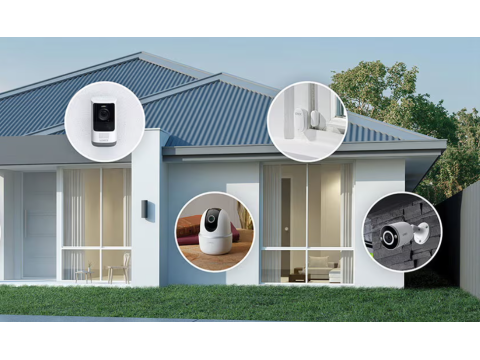How to Organize Surveillance for Your Summer Cottage
Modern summer cottages require reliable surveillance systems to ensure the security of the property and peace of mind for their owners. Installing a surveillance system is an essential step in deterring thefts and vandalism, while also allowing owners to remotely monitor their property.
Statistics show that properties equipped with surveillance cameras experience significantly fewer incidents compared to those without security measures.
In addition to providing security, a well-implemented system offers benefits such as:
- Monitoring construction or repair crews.
- Checking for damage after storms.
- Observing the growth of plants or crops remotely.
Selecting Equipment for Cottage Surveillance
Types of Cameras for Outdoor Use
Outdoor cameras need to withstand weather conditions and temperature extremes. Cameras with an IP66 rating or higher are ideal, as they provide protection against rain, dust, and temperature fluctuations from -40°F to 140°F.
Key options include:
- Dome cameras: Compact, vandal-resistant, and less noticeable.
- Bullet cameras: Offer wider angles and easier maintenance.
For nighttime monitoring, choose cameras with infrared (IR) LEDs, capable of capturing clear images at distances of 20-30 feet.
Storage and Processing Options
Modern DVRs can simultaneously record from multiple cameras.
- For most cottages, a 4-8 channel DVR with support for 1-4 TB hard drives is sufficient.
- Specialized HDDs designed for 24/7 operation are recommended for reliability.
- Cloud storage offers remote access to video archives, but a stable internet connection is required.
Power Supply Requirements
Reliable power is critical for uninterrupted operation.
- Use Uninterruptible Power Supplies (UPS) with a backup runtime of 4-6 hours.
- Modern UPS systems provide protection against power surges and spikes.
Installation and Connection
Identifying Surveillance Zones
Strategically position cameras to monitor critical areas:
- Entry gates and doors.
- Property perimeter.
- Driveways and parking areas.
- Tool sheds and outbuildings.
Ensure overlapping camera views to eliminate blind spots. Consider natural obstacles like trees and terrain variations.
Cabling for Outdoor Use
Durable, weather-resistant cables are essential.
- For underground wiring, use conduit buried at least 20 inches deep.
- Overhead lines require support with weatherproof connectors.
Mounting Cameras
Install cameras at a height of 8-10 feet to prevent tampering while maintaining a clear view.
- Securely mount cameras to avoid vibrations.
- Adjust for optimal viewing angles and avoid direct sunlight hitting the lens.
Internet-Enabled Surveillance
For remote monitoring, IP cameras and a stable internet connection are required.
Internet Options
- Wired broadband: Reliable but may not be available in all rural areas.
- 4G/LTE mobile internet: Use a router with mobile capabilities. Ensure sufficient signal strength and a data plan that accommodates video streaming.
Remote Access Setup
- Many systems offer user-friendly apps and web interfaces.
- Protect your system with strong passwords and two-factor authentication.
Maintenance and Upkeep
Regular Maintenance
- Clean camera lenses and housings every six months.
- Check cables, mounts, and power supplies for wear or damage.
- Monitor available storage and clear unnecessary files.
Upgrading the System
Plan for future expansion by:
- Using DVRs with additional channels.
- Laying extra cabling for new cameras.
- Selecting equipment compatible with emerging standards.
Conclusion
Establishing a reliable surveillance system for your summer cottage involves careful planning, equipment selection, and regular maintenance. A well-thought-out setup not only ensures safety but also offers flexibility for remote monitoring and potential upgrades. Invest in modern technology to secure your property and enjoy peace of mind.

